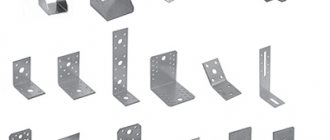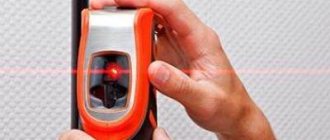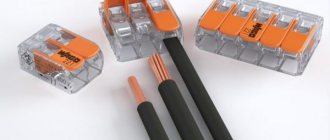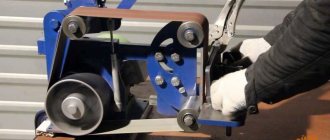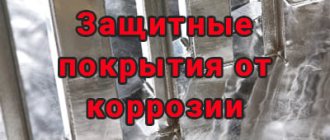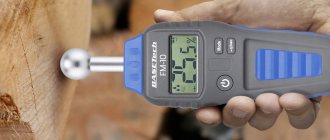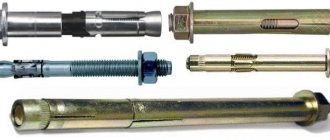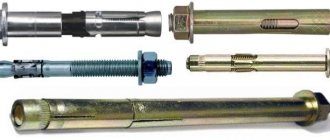Corrugated sheeting entered our lives relatively recently, unlike double-flight wooden stairs, but has already gained enormous popularity due to its versatility and lightness, like rubber insulation for doors.
This material is applicable for many purposes in construction, so there are different types and types of it, as well as anti-slip pads on steps. However, all varieties have one thing in common: one way or another it is corrugated sheets of steel coated with plastisol, purala or polyester .
What is corrugated sheeting
Profiled sheets are made from galvanized steel sheet, which arrives in the workshop in the form of a roll. As mentioned above, manufacturers offer three types of this building material:
- galvanized;
- galvanized painted ;
- galvanized with polymer coating on the front side.
So this sheet is unrolled and rolled through a rolling mill, in the design of which rolls are installed, forming a wave of profiled sheets. That is, the process of creating a form is cold rolling. No thermal processes. In this case, the dimensions of the rolls determine the dimensions of the waves of the material. If necessary, increase or decrease this parameter, change the rolls.
Now, as for the types of corrugated sheeting in terms of protective layers. The galvanized layer itself is an excellent protection of steel from metal corrosion. In this condition, the corrugated sheet will last up to 10 years. If its front side is painted with protective paints, the service life increases to 15, and in some climatic conditions, up to 25 years. And polymer-coated corrugated sheets can be used for up to 50 years. But there is one condition - the protective layers must not be damaged. If this happens, the service life is immediately reduced to 5 years.
Corrugated sheeting, galvanized without additional protective layers Source krsk.au.ru
Now we move on to the classification of profiled sheets. There are three main positions here:
- “N” is a load-bearing corrugated sheet, which is used as a roofing material, to create permanent formwork for floors, for the construction of enclosing structures, hangars, garages and other small construction projects.
- “C” is a wall type. From the name itself it becomes clear that this type of profiled sheets is most often used for cladding walls and ceilings. They are rarely used as roofing and for the construction of fences. As for roof coverings, these can be small awnings and canopies. The main requirement for the wall type used on roofs is the installation under it of either a continuous sheathing, or a spaced installation of elements in increments of 30-40 cm.
- “NS” is the so-called load-bearing wall material. This is a kind of intermediate stage between the first two. That is, the sheets have sufficient rigidity, but are cheaper than the load-bearing variety. In fact, it is a universal brand that builders use everywhere today.
Main types of profiled sheets Source hi.decorexpro.com
See also: Catalog of companies that specialize in roofing materials.
Self-tapping screws for fastening
The profiled steel sheet is fastened to the sheathing elements using self-tapping screws.
Or, as builders say, self-tapping screws.
A self-tapping screw is a type of fastener that is a steel rod with a head and a triangular external thread.
During the fastening process, such a screw independently cuts a thread inside the hole.
This type of fastener differs from screws and screws in that the thread is applied to the entire cylindrical surface of the rod.
Today, the range of self-tapping screws for fastening corrugated sheets is very wide.
And you should know that for each type of work there is a separate type of screws, differing in their parameters and characteristics.
That is, a self-tapping screw for installing corrugated sheets on the roof and a self-tapping screw for attaching to a fence are different fasteners.
And if you purchase the wrong fasteners, it is difficult to guarantee the strength and reliability of fastening the sheets.
Self-tapping screws are made from high quality stainless or galvanized carbon steel.
The screw kit also includes a gasket made of neoprene.
The presence of such a gasket allows you to make the attachment point airtight.
Most fastener manufacturers coat the head of the screw with polymer paint to make the fence or roof structure more presentable.
The paint used is the same as when painting sheets.
Therefore, after installation, the self-tapping screw is almost invisible.
Types of screws for fastening
There are three types of self-tapping screws for fastening corrugated sheets:
- For attaching products to wooden frames. For such a self-tapping screw, the thread pitch is rare, which ensures the strength of the fastener. Such a self-tapping screw can be screwed into even the hardest wood without any problems.
- For fastening the product to metal. Also, such a self-tapping screw is used if it is necessary to attach a profiled sheet to a structure that is subject to strong wind loads. The thread pitch on such a self-tapping screw is also rare. But when making a drilling tip, a special sharpening is made, which prevents damage to the structure of the material during the work.
- For fastening additional and ridge elements on the roof. These self-tapping screws are long.
All three types of self-tapping screws are equipped with a special drill tip, thanks to which there is no need to pre-drill a hole in the elements being fastened.
And the hex head is easily fixed in the screwdriver chuck, which greatly simplifies the work process.
Technical characteristics of profiled sheet C8
So, having figured out what profiled sheets are, let’s move directly to the topic of the article. And we will first of all deal with the technical characteristics and dimensional parameters of wall corrugated sheeting 8.
Let's start with the raw material. For this, cold-rolled steel of grade 01 or 220-350 is used. Sheet thickness – 0.4-0.7 mm. The thicker the sheet, the higher the strength characteristics of the material, the higher its price.
But another parameter also influences pricing – the layer of applied zinc. According to GOSTs, this size varies in the range from 140 to 275 g/m². Today on the market there are profiled panels made from galvanized sheets, the thickness of the protective layer of which is within 100 g/m². This profiled material is much cheaper. Although they sell it as a standard option. This is a scam, be careful, ask for a quality certificate.
Now, regarding the parameters. The brand designation is C8-1150-0.5. That is, the profile height is 8 mm, the usable width is 1150 mm, and the metal thickness is 0.5 mm. It should be noted that the total width of the panel is 1200 mm.
Dimensional parameters of profiled sheet of grade C8 Source a-steelmetall.ru
It should be clarified that profiled sheets, regardless of brand and size, are laid overlapping each other in one wave. In this way, the tightness of the assembled coating or structure is achieved. Therefore, when calculating the required amount of building material, it is the usable area that is taken, and not the total.
As for the length of the profiled sheet of grade C8, then, like all modifications of corrugated sheets, this parameter varies in a fairly large range: from 0.5 to 13 m. And this is a big plus, because it is possible to trim directly in the workshop to the required dimensional parameters of the framed plane. That is, for example, during the process of covering the wall, joints and seams will not form on the wall, which spoil the appearance.
And the last thing is the profile type. Wall corrugated sheet 8 has only a trapezoidal wave type.
The profiled sheet C8 has a trapezoidal profile Source deilo.ru
Requirements for C8 grade corrugated sheets from standards
GOST regulates the following requirements:
- There may be minor damage and abrasions on the front surface of the profiled sheet if they do not reduce the protective properties of the material.
- deviations from are possible : length – plus or minus 10 mm, width – 8 mm, corrugation height – 1 mm.
- Waviness of the sheet is allowed , but not more than 1.5 mm.
- Crescent shape is allowed within 1-1.5 mm per 1 m of length.
Advantages and disadvantages
The confidently growing demand for corrugated sheeting already serves as proof of the numerous advantages of the material . What are they?
- the ability to order profiled sheets of any size (thickness, length, trapezoid height) and color;
- resistance to various types of damage and resistance to aggressive environmental manifestations;
- anti-corrosion qualities (thanks to polymer and galvanized coating), like vinyl siding, the dimensions and components of which we wrote about in the material;
- environmental friendliness (the material is chemically inert);
- fire safety (corrugated sheeting does not support combustion);
- durability and reliability;
- simplicity and speed of installation, just like wooden stairs, about the dimensions of which you can read here;
- lightness and ease of transportation and operation;
- acceptable cost.
There are quite a lot of advantages, but there is only one minus: low level of sound insulation. However, this disadvantage can be negated by proper installation of sheets on the roof. To do this, experts recommend using additional soundproofing materials, for example, sheets of mineral wool, which will practically eliminate the noise problem.
It is also important to carefully transport profiled sheets: damaged areas lose their anti-corrosion properties.
Installation technology for C8 grade corrugated sheets
In principle, all profiled sheets are mounted in the same way. That is, there are certain rules that cannot be neglected. We missed one thing and got a low quality final result. Let's define these rules:
- As mentioned above, adjacent sheets, regardless of whether they are laid in a vertical, horizontal or inclined plane, overlap in one or two waves.
- If two adjacent sheets are joined in the longitudinal direction, then the displacement of one relative to the other should not be less than 10 cm. And the smaller the angle of inclination of the plane being closed, the greater the overlap should be.
- The corrugated sheeting is secured to the sheathing or frame using roofing screws with a hex head. In this case, the fasteners must be equipped with a neoprene rubber gasket, which does not change its dimensions and performance characteristics under the influence of different temperatures and sunlight.
The corrugated sheeting is fastened using roofing screws with a hex head Source lv.aviarydecor.com
- Fastening is carried out only in the lower wave . If there is a need to fasten two adjacent sheets together, then use short self-tapping screws that are screwed into the upper profile of the place where the two waves overlap.
- The screws must be screwed in strictly perpendicular to the laid sheet. You cannot fasten it skewed, because this will result in a leaky fit of the neoprene gasket to the plane of the profiled panel. That is, a gap is formed. This is especially important in the process of laying corrugated sheets on roofing structures.
- Do not over -tighten fasteners . Also, you can’t not tighten . In both cases, a leaky connection will form. That is, the roofing screw should press the corrugated sheeting against the sheathing, and not press it in with force.
Dimensions and calculations
When choosing corrugated sheeting, you must have an idea of the markings and dimensions of the material. The combination of letters and numbers on the sheets contains a storehouse of invaluable information that will help you choose the right brand of material correctly. So, what does this information contain? Let's look at a specific example. Let's say you saw the following combination of letters and numbers: C21-0.45-750-11000 .
What does it mean?
Weight and dimensions of corrugated sheets C8 and C10 in the table
- The letter C means the type of corrugated sheeting - wall.
- The number 21 indicates the wave height (in millimeters).
- 0.45 – metal thickness.
- 750 – width of the profiled sheet.
- 11000 – maximum profile length.
As you can see, the code that seemed at first incomprehensible turns out to be quite informative and meaningful, allowing you to correctly navigate when choosing a type of material.
Areas of application of the material
The main purpose of C8 grade corrugated sheets is to form various wall structures, so the sheets must be fastened perpendicular to the ground. They can be fixed to the walls of the room or special poles to create fences.
Important! Having carefully studied the technical parameters of this material, it can be argued that it can be used not only to form wall coverings, but also for some other purposes, therefore other construction operations are also implemented with its help.
If you plan to use it for other purposes, namely to create a covering on the roof, then the small load-bearing capacity of the corrugated sheet is taken into account. It will not be able to cope with static weight loads, so this point must be foreseen in advance.
This material is often used for:
- finishing of various buildings, which can be residential, public, industrial or commercial;
- formation of high-quality sandwich panels or other types of hanging materials;
- construction of utility structures with small dimensions, for example, a toilet or a change house;
- construction of various fences, but this process is carried out exclusively in areas where there are low wind loads;
- formation of roofing covering on different types of roofs.
Important! If you plan to use the material on the roof, then this can only be done on structures in which the slope does not exceed 45 degrees, otherwise it will be unsafe to use such a structure, and to increase the load-bearing capacity of the sheets, careful reinforcement of the rafter structure and sheathing is required.
Thus, the dimensions of the C8 profiled sheet and its other parameters are standard. The material is affordable, attractive and easy to use. It can be used not only to form wall coverings, but also for some other purposes. Under certain conditions, full-fledged small buildings can be erected from it.

